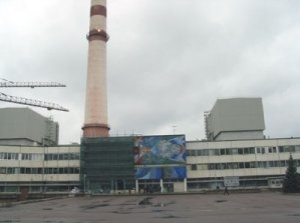
From Ukraine peace plans to Kazakh uranium—all that and more in our new nuclear digest
Our November Nuclear Digest by Bellona’s Environmental Transparency Center is out now. Here’s a quick taste of just three nuclear issues arising in U...
News

Publish date: November 12, 2020
News
Russian nuclear officials say they have shut down the second of the original reactors at the Leningrad Nuclear Power Plant, paving the way toward decommissioning one of the country’s oldest Soviet-built nuclear power units.
The No 2 reactor, which went into commercial operation in 1976, was among the first RBMK units built by the Soviet Union – one of which exploded at Chernobyl in 1986. Another two RBMKs were built at the Leningrad site throughout the 1970s and are expected to be taken out of service by next year.
The generating capacity of all four of the plant’s elderly units are being replaced by the reactors at the Leningrad Power Plant II, which is currently under construction alongside the first in Sosnovy Bor, on the Gulf of Finland 70 kilometers to the west of St. Petersburg.
In accordance with Russian federal regulations, the shutdown unit will be considered to be in operation until all of its spent nuclear fuel is removed – a process that Rosatom, Russia’s state nuclear corporation, says will take four years.
“As in the case of power unit 1, which was shut down in December 2018, regular operations will be carried out with the second unit. In fact, the procedures performed practically do not differ from ordinary maintenance,” Vladimir Pereguda, director of Leningrad NPP said, as quoted by World Nuclear News. “Now our task is also to service reliably and safely the shutdown units, unload nuclear fuel from the reactors and prepare them for transfer to the specially created enterprise Experimental Demonstration Engineering Centre.”
Noting the start-up of Leningrad II-2, Andrey Petrov, the general director of Rosatom’s operator subsidiary Rosenergoatom, said: “The replacement of the retired capacities will be imperceptible to electricity consumers.”
Currently, Russia has taken on only two other full-scale decommissioning projects on commercial reactor. In 2011, Rosatom, Russia’s state nuclear corporation, shut down the first two units of the Novovoronezh Nuclear Power Plant with the aim of decommissioning them fully.
Like the four RBMKs at the Leningrad plant, the older VVER-type reactors at the Novovoronezh will be replaced by VVER-1200 units at a new plant named for the old –the Novovoronezh Nuclear Power Plant II.
The decommissioning of these reactors is therefore seen as something of a test case for more than a dozen other reactors Rosatom intends to shut down and replace over the next decade.
Aside from pressing environmental worries about how and where the resulting tons of spent nuclear fuel will be stored or reprocessed, it will be revealing to observe how these projects are financed.
Like many other countries operating nuclear reactors, Russia funds decommissioning and dismantlement on the back of electricity tariffs charged by its nuclear power plants.
But where other countries have been collecting such tariffs for more than half a century, it was only in 1995, after the fall of the Soviet Union, that the Russian nuclear industry began earmarking a portion of its revenues toward the work of eventual reactor decommissioning.
As such, Russia’s decommissioning resources are lacking – a shortfall that has led often enough to Russia simply extending the runtime of aged reactors. In fact, all of the original Leningrad Nuclear Power Plant’s reactors have been operating on various engineering extensions since the early 2000s.
While runtime extensions are routine practice throughout the nuclear powered world, Russia has often been seen as taking the measure to extremes, with officials at the Kola Nuclear Power Plant near Murmansk seeking to prolong the runtime of reactors built in the 1970s until 2040 and beyond.
The kind of money Russia spends on its decommissioning projects is meanwhile something of an official secret, leading many environmental groups to conclude that the government will simply divert money from other resources to get the job done.
Compared to RBMK power units, the new VVER-1200 power units that are being commissioned are 20 percent more powerful and have a service life of up to 60 years if their irreplaceable equipment is doubled, Rosatom has said.

Our November Nuclear Digest by Bellona’s Environmental Transparency Center is out now. Here’s a quick taste of just three nuclear issues arising in U...

For three years now, Bellona has continued its work in exile from Vilnius, sustaining and expanding its analysis despite war, repression, and the collapse of international cooperation with Russia in the environmental and nuclear fields

The Board of the Bellona Foundation has appointed former Minister of Climate and the Environment Sveinung Rotevatn as Managing Director of Bellona No...

Økokrim, Norway’s authority for investigating and prosecuting economic and environmental crime, has imposed a record fine on Equinor following a comp...